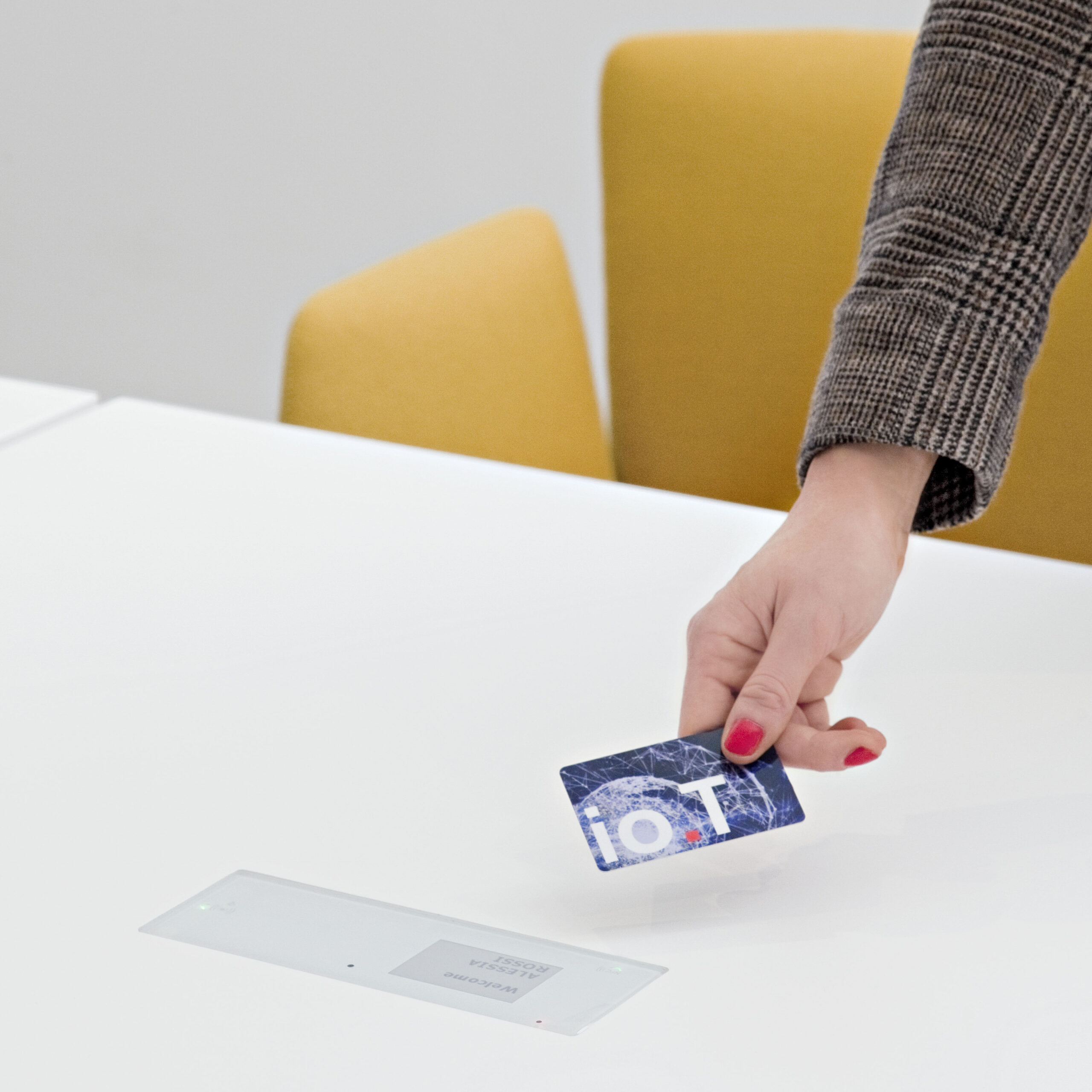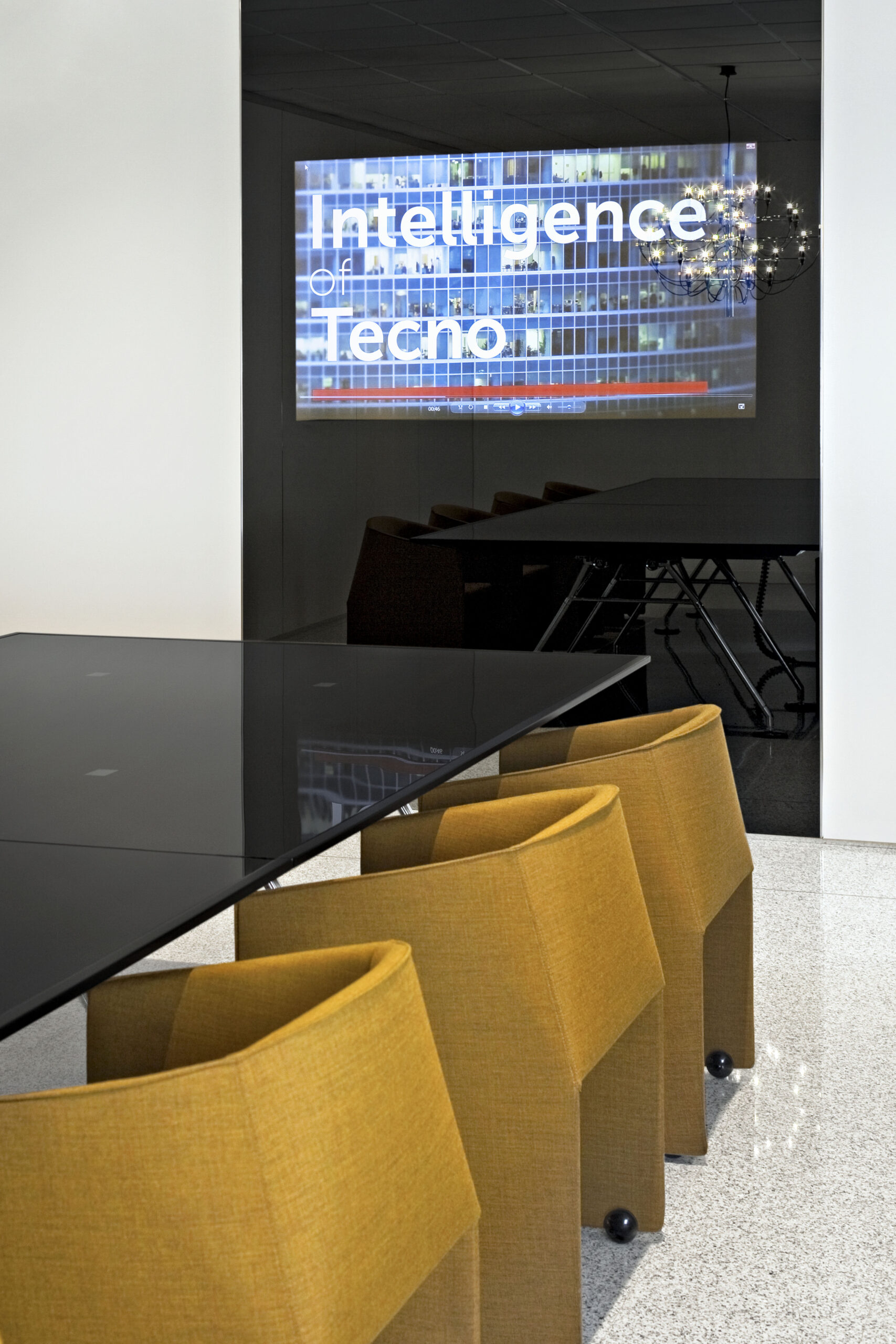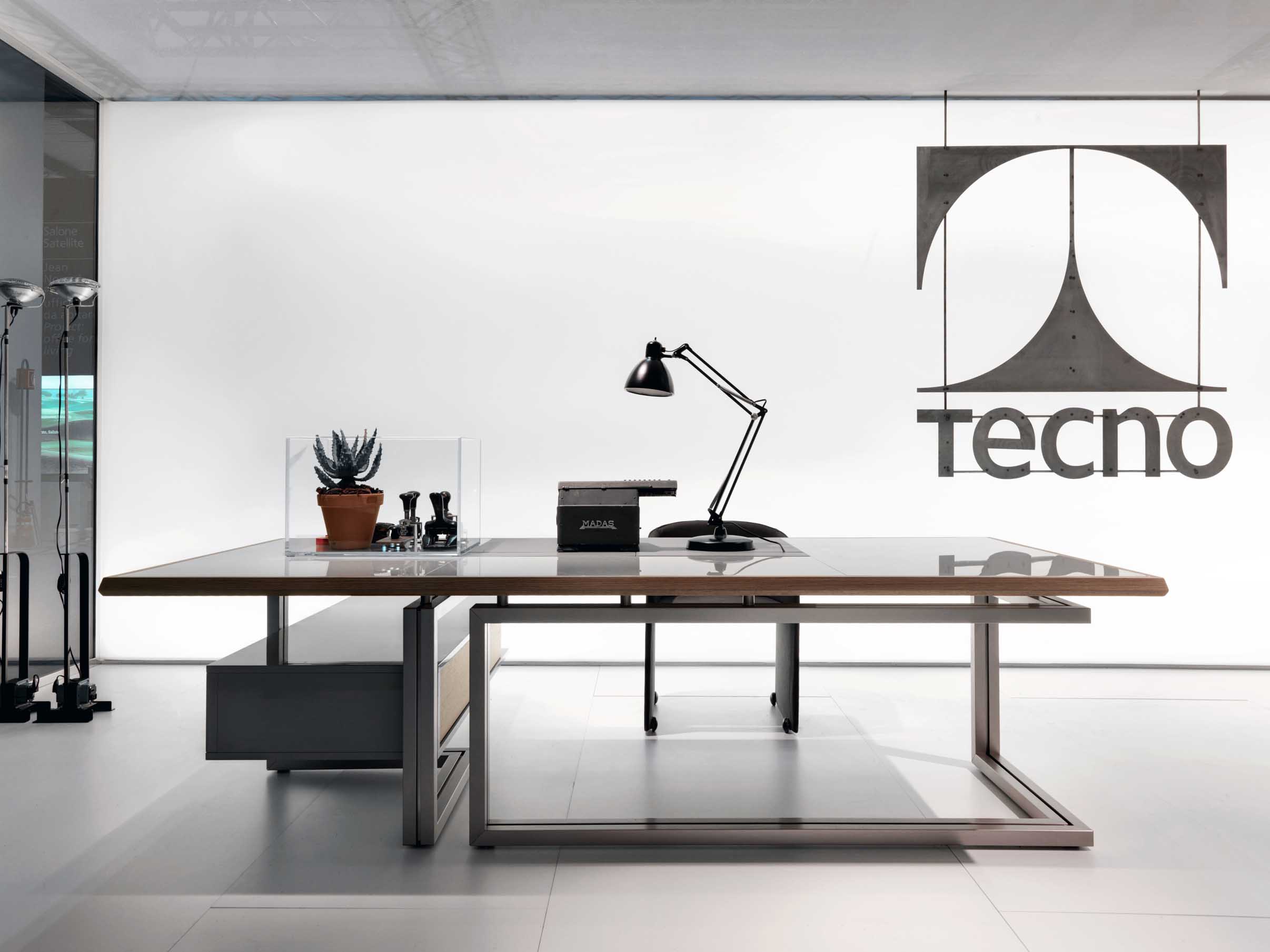Italy is renowned as the home of some of the world’s classiest interior design, especially in contemporary furniture. Now, thanks to a marriage with high technology, one of Italy’s legendary design companies is making office chairs, desks, and tables that are as smart as they are chic.
The designers at Milan-based TECNO S.P.A. wanted to update their office furniture lines by using digital technology to make them more “aware” of the people using them. And so they turned to STMicroelectronics for help.
A typical TECNO design idea: A desk set that would recognize the person sitting at it, and automatically tailor settings such as lighting, temperature and humidity, and background soundtrack to that person’s preferences.
Being furniture makers and not engineers, they knew what the objects should look like. But they had no idea how to give them the intelligence necessary make them work as envisioned.
Enter ST. “At the beginning of the process, we were talking two different languages,” said TECNO president Giuliano Mosconi. “We are carpenters, ST’s engineers are digital technologists. But slowly, we began to understand each other.”
ST schooled the TECNO designers in the beautiful features of some of its flagship products: Bluetooth 4.1 controllers, STM32 MCUs, Wi-Fi and NFC transceivers, and sensors for proximity, humidity, and pressure.
The result was an Office of Tomorrow with the very best of today’s design, making TECNO the first Italian furniture company that can lay a claim to designing for the “Internet of Things.” The io.T — Intelligence of TECNO — suite of office furniture was introduced at the 2015 Milan Salone del Mobile, the world’s preeminent furniture exhibition.
Using ST’s technology, TECNO io.T furniture can, for example, limit access to a meeting room to confirmed participants. It might also control temperature, humidity, lights, and music, according to the tastes of those present. And since it knows who is in attendance, the system can provide appropriate information, everything from security and safety rules to parking hours and cafeteria menus.

As a result said Mosconi, TECNO’s furniture can “simply and quickly create an interface between user and the environment in both the building and the room. With ST’s technology, furniture for the first time takes advantage of the imagination, creativity, and techniques of its users to improve business processes and facilitate communications.”
TECNO’s “smart” furniture is ideal for today’s mobile workforce, in which a different person might be sitting at a work station every few hours, or for global companies whose employees might be in Milan one day and New York the next. Fusing TECNO’s aesthetic talents with ST products and design expertise, work areas can look magnificent AND be quickly re-configured to a new occupant’s tastes. The digital systems provide benefits for facility managers, too: They can keep track of which meeting room or station is busy and which are available. They can also collect data on energy usage and other crucial metrics, and save energy by only lighting and heating or cooling when the furniture is being used.
ST’s Alessandro Messi, Vice President of South, East, Middle East, and Africa Sales, said TECNO is another example how the company’s easy-to-use ecosystem of digital tools “is opening the door to an explosion of applications that are making our lives safer and more convenient, comfortable and productive.” Not to mention smartly-designed.
